Last week, I took my kids to the San Diego Zoo and we headed toward a less crowded area where the giant Galapagos tortoises reside. As often happens, on our walk I pointed out the plants as much as the animals. “Do you see this avocado tree over here?”

Then I noticed fruit. Looked mighty Fuerte-like to me. And the leaves, they looked exactly like Fuerte leaves: large, flat, deep green. “Guys, I think it’s a Fuerte!”
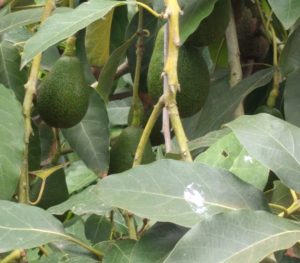
I’d been noticing this hidden little avocado tree for years, but never noticed fruit on it. Maybe this was its first year bearing. I think of the tree as “hidden” only because many plants at the Zoo have labels with their common names and botanical names and places of origin — which I’ve always appreciated — but this tree calls no such attention to itself. There are many more like it, if you occasionally turn your gaze from the animals to the surrounding forests.
Not like a Zoo visitor could miss the plants. The beauty of the Zoo’s botanical collection is obvious the minute you go from the parking lot to the Zoo’s entrance. I’ve heard that, in fact, the value of the plants on the San Diego Zoo’s 100 acres is higher than the value of its animals although I can’t now seem to find where I heard that in order to confirm it. But the fact that there are fruit trees nestled among the colorful coral trees, soaring palms, and hibiscus flowers that are as big as your head is not always obvious.
Here is a guava we saw near the Fuerte avocado:
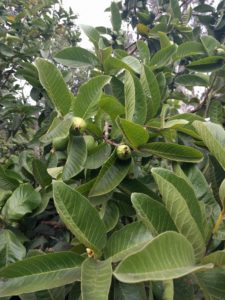
Here is a tiny cherimoya that was tucked into surrounding ornamental plants:
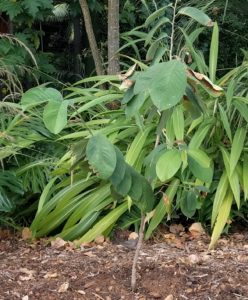
In just that same remote corner of the Zoo we saw loquats and blackberries too. In other areas there are more guavas, passion fruit vines, figs, feijoas, and pineapples.
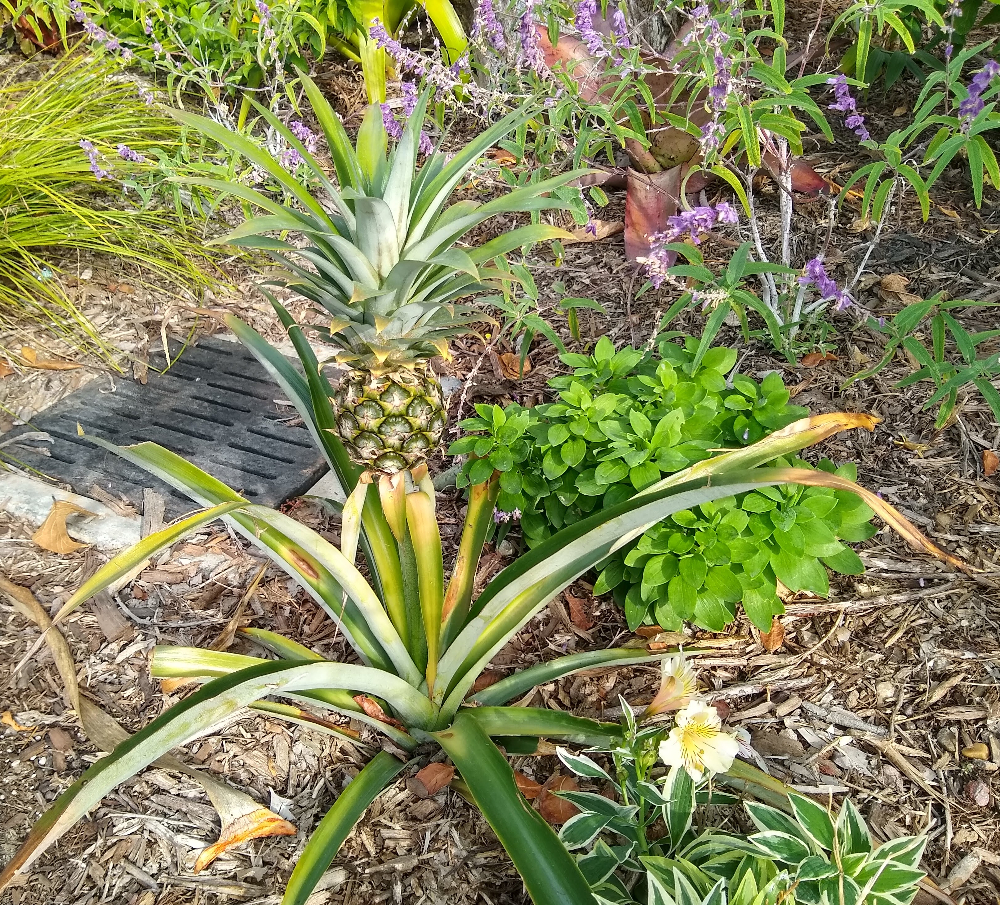
There are also coffee bushes.
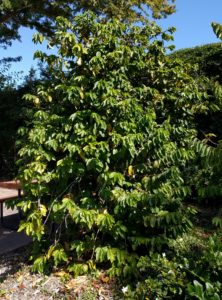
There are dragon fruit vines and sugar cane near the coffee bush.
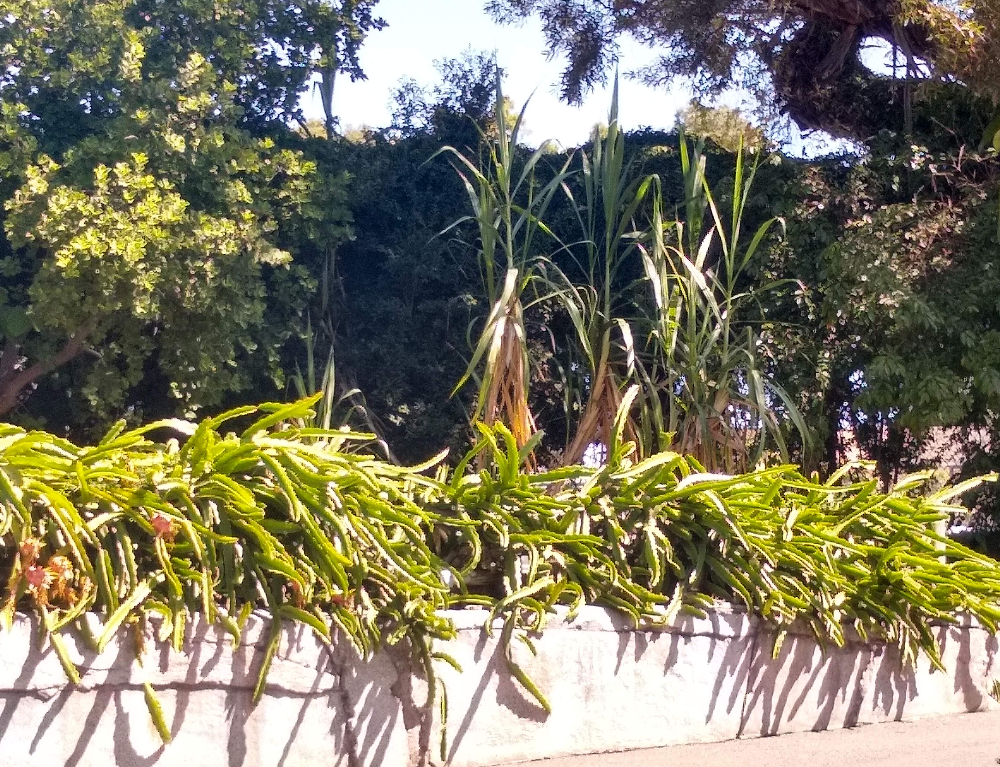
And there are lots and lots of bananas. According to the Zoo’s website, they grow 24 types of bananas. “The leaves and stalks are harvested and given to our primates and elephants as browse. The fruit sometimes supplements the commercial bananas purchased to feed a variety of animals in the collection.” These banana plantings are sometimes conspicuous, such as in the grove at the Zoo’s northeast corner, but there are smaller plantings sprinkled in almost every other part of the property.
For example, here are some bananas by the snakes:

And here is a bunch forming on a plant near the fossa that we saw on a Nighttime Zoo visit:

I continue to notice fruit trees for the first time, even after visiting the Zoo often for many years. From 2009 to 2013, my wife and I even lived right next to the Zoo — we were so close that we often heard the Transvaal lion roaring while we fell asleep at night. And while gardening in the morning, I could hear the monkeys hollering so loudly that I expected them to peek out from behind a tree in our yard.
Recently, I noticed for the first time a few pomegranate trees by the birds of prey, and I also noticed a litchi tree near the baboons. Look at these jujubes I spotted near the bottom of the escalator.
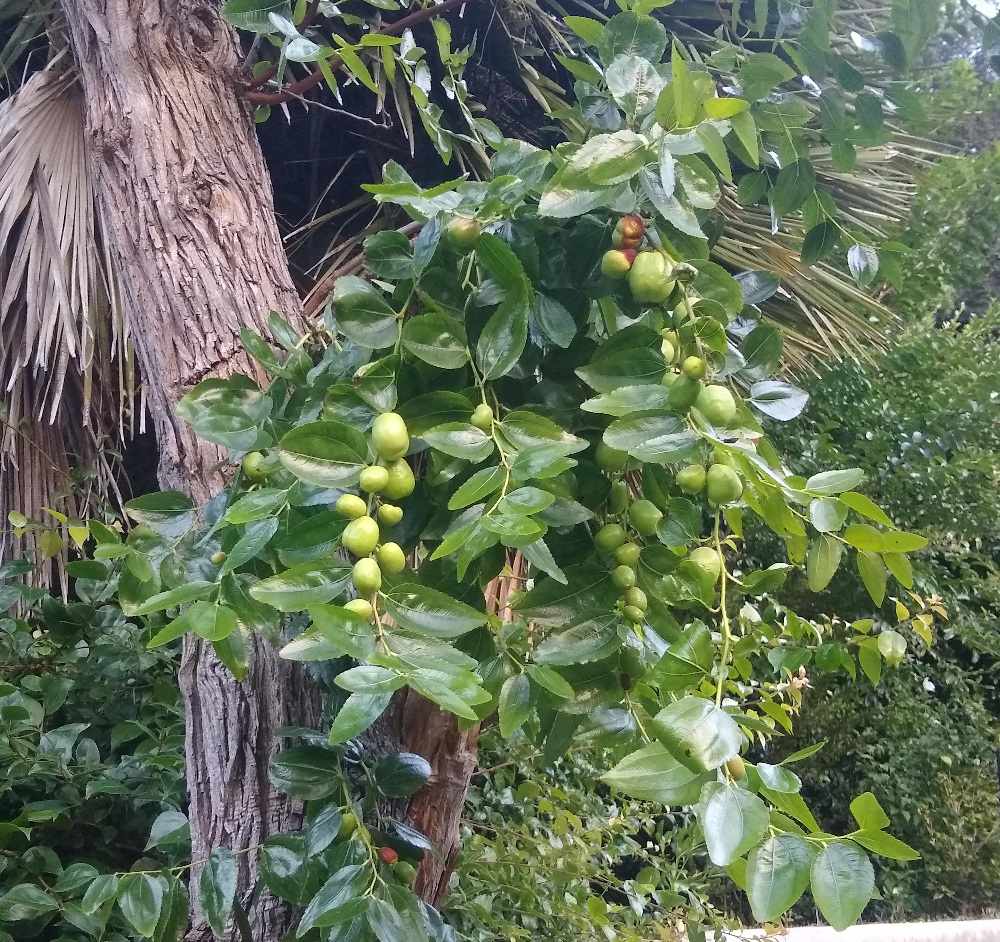
And here is a healthy kei apple in the newer Africa Rocks area.
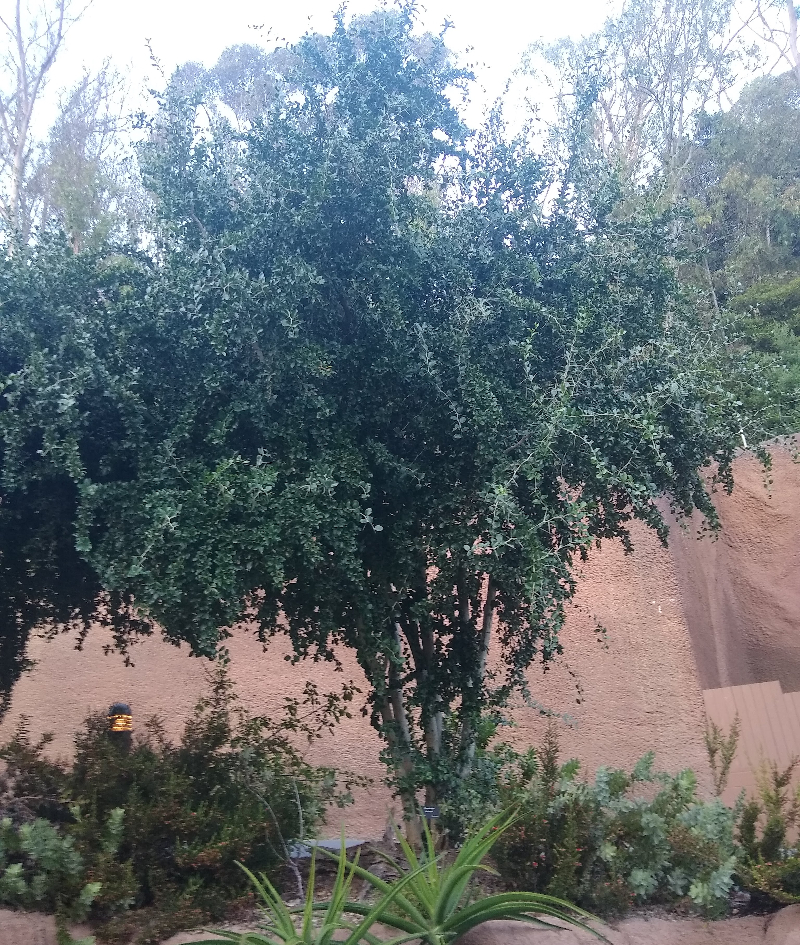
In addition to the Fuerte avocado tree I mentioned earlier, I’ve been watching an avocado seedling grow up near the hippos. It was clearly not intentionally planted there, but I’m glad they haven’t removed it since it’s now over ten feet tall and likely to flower soon.
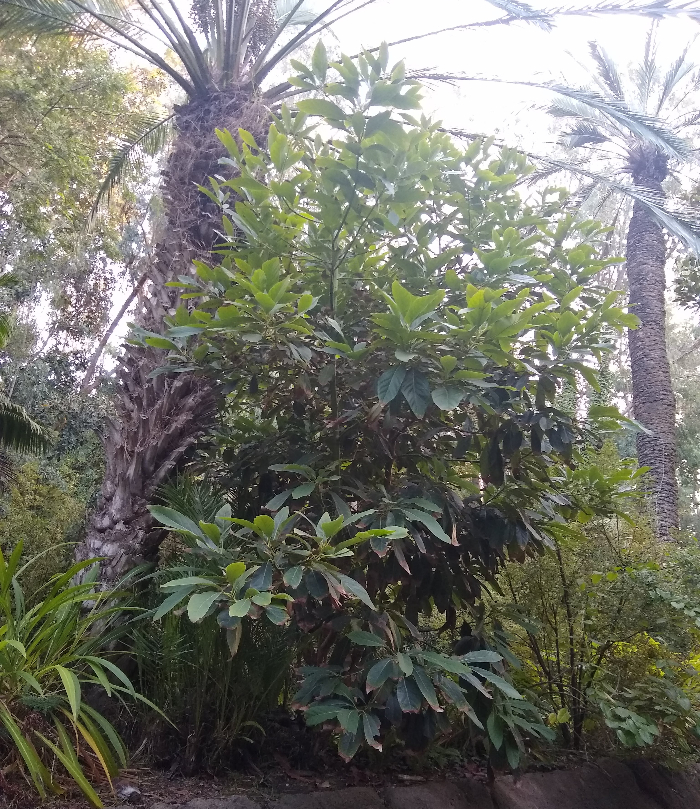
Unfortunately, I’ve also seen other fruit trees intentionally planted but grow poorly. A few years back they put in a little orchard with peaches and apricots and blueberries down by the lagoons where the herons hang out at the Zoo’s low-elevation southwest corner. But it was too shady there and the plants struggled.
Have you ever noticed this mango tree? I won’t tell you which part of the Zoo it’s in, just in case you haven’t. Treasure hunt.
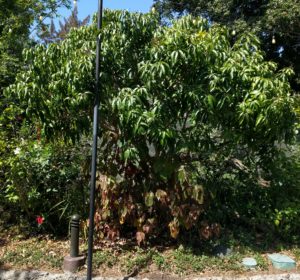
All of my Yard Posts are listed HERE
My Yard Posts are 100-percent fueled and funded by gardeners like you. No ads. Thanks!

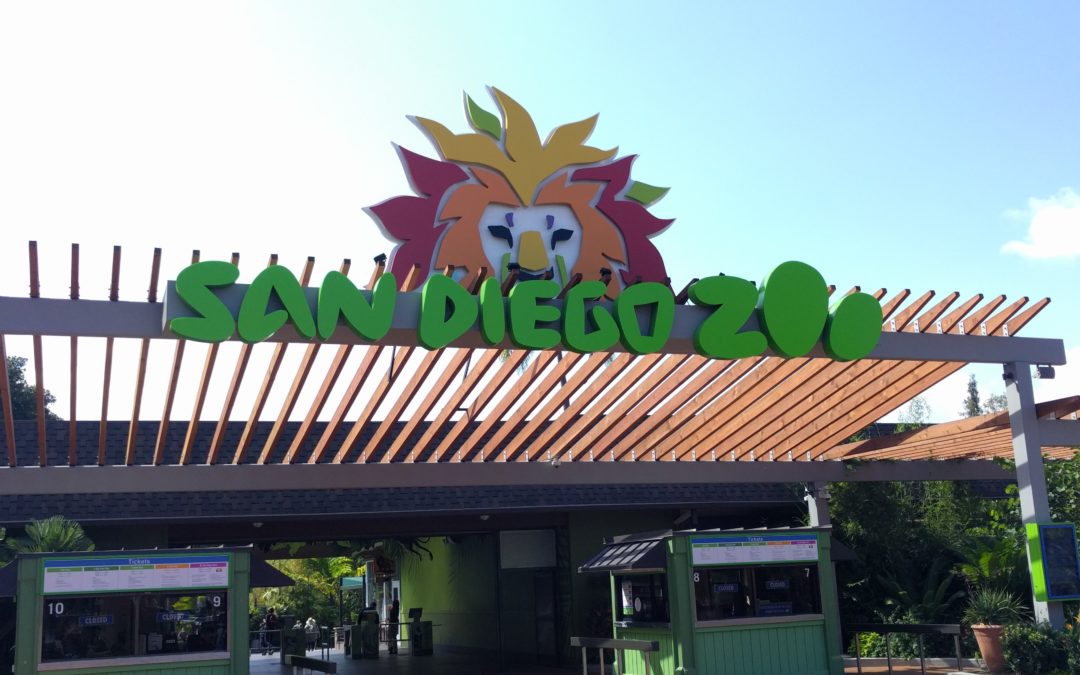


I love this post. I had only noticed an orange tree on the path down to the bonobos. I am going to start looking on my frequent zoo trips!!
I don’t remember seeing an orange tree near the bonobos. I’m going to have to keep my eye out for that one. Thanks for sharing.
If u go up the path right past canyon cafe. Restaurant Near the moving walk way there are mulberry trees growing over head.
What month does the mango tree bloom ?
I am a landscape designer and just planted two varieties ofmango saplings at a clients house .
Waiting with breathless anticipation.
Thank you for sharing your knowledge .
Hi Val,
In Southern California, mangos bloom in the spring (or near the spring). But if you planted seedlings (non-grafted) mango trees you will probably not see them bloom for a few more years. All the grafted mango trees that I’ve planted or seen, however, have bloomed their very first spring. (It’s actually not a good thing because the tree is too small to carry fruit.)
Great post Greg. I also love plant hunting at the zoo. There is a lightly traveled path near the entrance just before the Orangutans – we call it the ‘Fern Gully’ trail. It’s probably the most lush and tropical looking place in the zoo. In addition to cascading waterfalls there is a big fig tree and tons of bananas. I’ve got to revisit and search for your finds!
Yes, Evan! That is our favorite path in the zoo. My wife and I sometimes bring our lunch or dinner and sit on a bench down there to eat. I think they call it Fern Canyon Trail. We always dream of making our backyard like that.
I have two avocado trees Fantastic and Poncho planted 2/20/2020 in 20 gal plastic pots using Loews “top soil”. Fantastic flowered in March, set 7
fruit but aborted 2X pencil eraser size. This tree has never had any leaf/tip burn. In contrast Poncho had no flowers even tho it was larger, but had tip burn midway to top. I use city tap water and have added AmS04 twice. Both have made good growth (4 & 5 feet above pot). I covered once Dec 2 with heavy paper trash bags (26 degrees). I have not seen any cold damage. In fact Fantastic has several fruiting tips showing flower buds. I will add string of Xmas lights today and cover with frost protection bag? (30 degree predicted tonight. The pots are sitting on concrete parking space beside garage. I’m retired Extension
Hort. at Texas A&M but now live 30 mi S. of Austin Tx Zone 8b. I enjoy
your experiences and advice on avocados. Thanks
Hi Thomas,
Thank you. I’ve heard the names of those avocado varieties, but I know nothing about them. I’ve never heard of them being grown in my area. I would imagine they are types that can handle temperatures well below 30. Some such types are grown in the northern end of California’s Central Valley. Since the trees are young, I think you’re still smart to be protecting them when it’s predicted to get to 30 or below. Christmas lights inside a thick frost blanket works pretty well, but I’ve noticed that a roof of some type can work even better. I understand that it might be hard to erect something like that, but that’s the main method I’ve settled on to protect my young trees. If you haven’t seen it yet, check out this post: https://gregalder.com/yardposts/protecting-avocado-trees-from-cold/
What fruit varieties do you currently have?
Hi EOR,
I’ve actually been putting together a document that answers that question, along with details such as when I planted each tree and what rootstocks they’re on. Maybe I should put that information into a post when I finish. Would that interest you?
In the meantime, let me know if you’re curious if I have a specific type or variety.
Thanks!
Cool, I will keep an eye out next time! I’ve only been to the zoo on field trips where I was too busy with the kids to notice, and I wouldn’t have really known what to look for then. I notice that now when I go to parks, I focus on the trees and natives and take pictures. Makes me feel old, but joy is joy.
I saw a tree with yellow flowers and a round yellow fruit by the Cliff Jumpers (Hyrax) Exibit. Do you know what does fruit are and if they are poisonous or non poisonous?
Hi Esther,
I’ll have a look next time I’m there.
This may be Kei Apple. There are many in the zoo. The camels like them.
Hidden food plants tap something primal. This year I found some strange plants growing in my yard. Wild tomatoes! Tiny fruit about as flavorful as a store tomato, as in not very. A site in Irvine was called Tomato Springs for its wild tomatoes.
Raspberry canes, near the Reptile House, are growing in abundance. 09/2021
Ficus (figs) is current favorite genus.
New Botanical Tour brochures are now available. (Like a scavenger hunt).
Hi Fran,
I’ve seen many blackberries by Reptile House (and in a few other locations, such as near the Galapagos tortoises), but I haven’t noticed raspberries. I’ll keep my eye out.
As many times as I have visited the zoo, I have never noticed fruit trees. Something new for my next adventure!
This is fantastic! I’ve seen the cherimoya, but noticed little else. Will be on the lookout – more than I usually am!
The Wild Animal Park has what I believe is a kei apple (near the safari line). Legoland has some monstera deliciosa that fruits. That’s an interesting one to experience!
When managing SDSU’s office of sustainability, a student and I developed an edible food map for the campus. We pulled in information from the plant database into Google maps. Lots of interesting plants there! Great for nibbling and reduces clean up for the landscapers!
https://www.google.com/maps/d/u/0/viewer?mid=1W6HoHIW3zJXyGYiJSPvTic2JybIIek0R&ll=32.77661674701609%2C-117.071360861958&z=16
That is so cool, Tom! Thanks for sharing. Next time I’m at SDSU, I’ll pull up the map and see what snacks I can find.
This is so cool! Thanks for sharing.